Today’s businesses constantly seek effective performance marketing services strategies. They aim to drive growth and maximize their return on investment in the digital landscape. One such strategy that has gained significant popularity is performance marketing. But what exactly are performance marketing services? How does it differ from traditional digital marketing? And most importantly, how can it drive business growth in the year 2025 and beyond?
What is performance marketing?
Performance marketing is results-driven. It focuses on measurable outcomes and key performance indicators (KPIs). Traditional marketing methods rely on broad audience targeting and awareness-building. In contrast, performance marketing focuses on delivering tangible results. It is a data-driven approach. It leverages various channels and platforms. The goal is to reach the right audience, at the right time, with the right message.
Performance marketing is a strategy that aims to maximize marketing campaign performance. It does this by driving specific actions or conversions. It is a form of digital marketing services. It aims to generate measurable results, such as sales, leads, or downloads. Performance marketing services are designed to deliver targeted messages to a specific audience. They use various channels. These include search engine advertising, affiliate marketing, and social media marketing services.
This approach allows businesses to track and measure their marketing efforts. It enables them to optimize their campaigns and allocate their budget effectively. Recent data by Research and Markets indicates the growing importance of performance marketing. The global market is expected to reach a value of $15.9 billion by 2026.
Understanding the Concept of Performance Marketing Services
We need to delve deeper into the core principles of performance marketing to truly understand the concept. Performance marketing is a pay-for-performance model. Advertisers only pay when a specific action is taken. This action could be a click, a lead generation, a sale, or any other predefined goal. It aligns with the business objectives.
Performance marketing operates on a performance-based model. The results are directly tied to the investment. This makes it a highly cost-effective marketing strategy. Businesses can accurately track and measure the return on their marketing spend.
Performance marketing has become an essential component of modern marketing strategies. This marketing type focuses on driving specific actions. For example, clicks, leads, or sales. It is highly measurable and an attractive option for businesses seeking to maximize return on investment. In this blog post, we will delve into the concept of performance marketing services. We will explore various performance marketing channels. We will discuss the essential elements of a successful performance marketing strategy.
What are the Key Components of Performance Marketing Services
- Performance marketing: Performance marketing is centered around measurable key performance indicators (KPIs). They include click-through rates, conversion rates, and return on ad spend.
- Targeted Approach: The targeted approach allows precise targeting of the desired audience. This is based on demographics, interests, and online behavior.
- Cost-Effective: Advertisers only pay when the desired action is completed. This makes it a cost-effective advertising model.
What are the Performance Marketing Channels
Performance marketing utilizes various channels to reach potential customers and drive specific actions. Some of the prominent performance marketing channels include:
- Search Engine Marketing (SEM): It uses paid search ads. Businesses can target users actively searching for specific products or services.
- Affiliate Marketing: This involves partnering with affiliates. They promote products or services and earn a commission for driving sales or leads.
- Social media advertising Platform: Platforms like Facebook, Instagram, and LinkedIn. They offer strong performance marketing features. These platforms target specific audience segments based on their interests and behaviors.
- Display Advertising: In display advertising, advertisers can pay based on their ads’ performance. This includes clicks or conversions. This is instead of paying based on ad placement.
Detail Comparison of Performance Marketing vs. Digital Marketing
Performance marketing falls under digital marketing services. It is important to understand the distinction between the two. Digital marketing services encompass a wide range of tactics and strategies. They aim to promote products or services online. It includes channels such as search engine optimization (SEO) and content marketing. It also includes social media marketing, email marketing, and more.
Performance marketing is a subset of digital marketing. It focuses specifically on achieving measurable results. Digital marketing may have broader objectives, such as brand awareness, engagement, or visibility. Performance marketing solely focuses on driving specific actions that lead to business growth.
| Aspect | Performance Marketing | Digital Marketing |
| Definition | Focuses on measurable results and ROI. | Encompasses various online marketing strategies, including performance marketing. |
| Objective | Achieve specific, measurable outcomes, such as sales or leads. | Build brand awareness, engage audiences, and drive traffic. |
| Key Metrics | Conversion rate, cost per acquisition (CPA), return on ad spend (ROAS). | Impressions, clicks, click-through rate (CTR), and brand mentions. |
| Targeting | Highly targeted to specific audience segments based on behavior, demographics, or intent. | Can be targeted but may also focus on a broader audience reach. |
| Payment Model | Performance-based, where advertisers pay only for desired actions (e.g., clicks, conversions). | Can be performance-based or based on other metrics such as impressions or clicks. |
| Channels | Utilizes various channels including search engines, social media, affiliate marketing, and email. | Encompasses all online channels, including social media, email marketing, content marketing, SEO, PPC, etc. |
| Flexibility and Agility | Offers flexibility to adjust campaigns in real-time based on performance data. | Requires agility but may not always be as performance-focused. |
| ROI Focus | Emphasizes ROI and measurable results, making it easier to track and optimize campaigns for maximum return. | ROI is important but may not always be the primary focus. |
| Examples | Google Ads, Facebook Ads, affiliate marketing, and email marketing campaigns with performance-based pricing. | Content marketing, social media advertising, search engine optimization (SEO), display advertising. |
Please note that Performance Marketing is a subset of Digital Marketing services. It specifically focuses on achieving measurable outcomes. It is often associated with performance-based payment models.
What are the Benefits of Performance Marketing for Businesses Growth
The benefits of performance marketing for businesses are numerous. Firstly, performance marketing provides businesses with a clear and measurable return on investment. Companies can optimize their marketing spend by tracking the performance of each marketing campaign. They align the campaigns with specific business goals. They can also allocate resources more effectively.
Secondly, performance marketing allows for precise targeting and audience segmentation. Businesses can use advanced analytics and data-driven insights. This helps them to identify their ideal customers with laser precision. They can also use these tools to reach them. This improves marketing efficiency and increases the likelihood of conversions and sales.
Lastly, performance marketing fosters a culture of continuous improvement and optimization. Businesses can refine their marketing approach by constantly analyzing data, monitoring results, and adjusting strategies accordingly. This will maximize their chances of success. What are the benefits of performance marketing for businesses looking to expand their reach and drive revenue? Let’s delve into the key advantages:
1. Measurable Results:
One of the primary benefits of performance marketing is its emphasis on measurable outcomes. Traditional marketing methods may have unclear success metrics. Performance marketing allows businesses to track and analyze data in real-time. Businesses can accurately measure key performance indicators (KPIs). These include conversion rates, cost per acquisition (CPA), and return on ad spend (ROAS). They can do this by using tools such as Google Analytics and ad platform dashboards. This level of transparency enables informed decision-making and optimization strategies to maximize ROI.
2. Targeted Audience Reach:
Performance marketing services enable businesses to precisely target their desired audience segments. They use demographics, interests, behaviors, and other relevant factors. Businesses can ensure that their marketing messages reach the most relevant audience. This audience is likely to convert. They can do this using Facebook Ads and Google Ads. The platforms offer sophisticated targeting capabilities. This precision targeting increases campaign effectiveness. It also minimizes wasted ad spending on irrelevant audiences.
3. Cost-Efficiency:
Another key advantage of performance marketing is its cost-efficiency. Traditional advertising models require businesses to pay upfront for ad placement. This is true regardless of performance. In contrast, performance marketing operates on a pay-for-performance basis. Businesses only pay when desired actions, such as clicks, conversions, or sales, are achieved. As a result, businesses can allocate their marketing budget more effectively. They can focus resources on channels and campaigns that deliver tangible results.
4. Scalability and Flexibility:
Performance marketing offers businesses flexibility. They can scale their campaigns based on their growth objectives. It also allows them to work within their budget constraints. Performance marketing allows for easy scalability to accommodate changing business needs. It’s suitable for small startups and large enterprises. Additionally, performance marketing is agile. It enables businesses to quickly adapt to market trends. They can optimize campaigns in real-time and seize growth opportunities.
5. Data-Driven Decision Making:
In the era of big data, performance marketing empowers businesses. It provides valuable insights derived from data analytics. Businesses can gain deep insights into customer behavior, preferences, and trends. They can do this by continuously monitoring and analyzing campaign performance metrics. These insights inform marketing strategies. They also drive overall business decision-making, leading to more effective, customer-centric approaches.
6. Enhanced Brand Awareness and Visibility:
Performance marketing is often associated with direct-response advertising aimed at driving conversions. However, it also plays a crucial role in enhancing brand awareness and visibility. Businesses can effectively engage with their target audience at various stages of the buyer’s journey. They do this through the strategic use of display ads. They also use retargeting campaigns and content marketing initiatives. Businesses can strengthen brand recognition and build trust with potential customers over time. They do this by maintaining a consistent presence across multiple channels.
Businesses can unlock new expansion opportunities by embracing performance marketing strategies and harnessing the power of data-driven decision-making. This can propel their growth trajectory.
3 Proven Performance Marketing Strategies for Driving Business Growth in 2025
In 2025, adopt the right strategies to harness the power of performance marketing and drive business growth. Here are 3 key strategies to consider:
1. Define clear objectives and KPIs
Before starting a performance marketing campaign, define clear objectives. Define key performance indicators (KPIs). Whether you want to increase website traffic, generate leads, or drive sales, clear goals will guide your marketing efforts. They will also measure success accurately.
Clear objectives serve as guiding principles for performance marketing campaigns. They provide direction and focus for marketing efforts. Whether the goal is to increase sales, generate leads, or boost brand awareness, defining clear objectives helps align marketing activities with overarching business goals. Clear objectives also help team members communicate and collaborate. This ensures everyone works towards a common purpose.
What are the KPIs in Performance Marketing Services?
Key performance indicators (KPIs) are quantifiable metrics. They measure the success of performance marketing campaigns. When selecting KPIs, choose metrics that directly align with campaign objectives. The metrics should provide actionable insights into performance. Some commonly used KPIs in performance marketing are mentioned below:
- Conversion Rate: The conversion rate is the percentage of website visitors who complete a desired action. This can include making a purchase or filling out a form. High-converting keywords and landing pages are critical for maximizing conversion rates.
- Return on Investment (ROI): The ratio of net profit to the cost of the marketing investment. Calculating ROI helps determine the effectiveness and profitability of marketing campaigns.
- Cost per Acquisition (CPA): The average cost to acquire a new customer or lead. Monitoring CPA helps optimize marketing spend and improve campaign efficiency.
- Click-Through Rate (CTR): The percentage of users who click on a specific link or ad. A high CTR indicates strong ad performance and relevance to the target audience.
- Customer Lifetime Value (CLV): CLV is the total revenue generated by a customer over their entire relationship with the business. Maximizing CLV is essential for long-term profitability and customer retention.
Businesses can evaluate campaign performance and optimize marketing efforts. They do this by establishing measurable goals and metrics. This can drive tangible results. The digital landscape continues to evolve. Staying focused on clear objectives and KPIs will be crucial. It will help achieve success in performance marketing.
2. Leverage a multi-channel approach to Performance Marketing Services.
Performance marketing is all about reaching the right audience at the right time. To do this effectively, it is important to leverage a multi-channel approach. This means using a combination of channels. These include search engine marketing, display advertising, social media marketing, and email marketing. This maximizes reach and engagement.
Maximizing the effectiveness of performance marketing strategies requires a multi-channel approach. In this guide, we’ll explore the importance of multi-channel marketing. We’ll focus on its role in performance marketing. We’ll also provide actionable tips for implementation.
What is the Importance of a Multi-Channel Approach:
A multi-channel approach allows marketers to reach potential customers wherever they are online. This increases the likelihood of engagement and conversion. Research shows that consumers engage with brands across multiple channels before deciding to make a purchase. Diversify your marketing efforts across different channels. These could include search engines, social media, email, and affiliate marketing. This can help you effectively reach and engage your target audience throughout their buying journey.
Actionable Tips for Implementation Multi-channel Approach Key Factors:
- Integrated Campaigns: Develop integrated marketing campaigns that seamlessly span across multiple channels. Align messaging and branding across all touchpoints. This provides a cohesive and consistent experience for your audience.
- Audience Segmentation: Tailor your messaging and content for different channels and audience segments. Understand your target audience’s preferences and behavior on each channel. This will help you deliver relevant and personalized experiences.
- Data Integration: Integrate data from various channels. This will give you a holistic view of your marketing performance. Use analytics tools to track and measure the effectiveness of your campaigns across different channels. This will allow you to optimize your strategies based on real-time insights.
- Omni-Channel Retargeting: Implement omni-channel retargeting strategies. Use them to re-engage users across multiple touchpoints. Use them after they have interacted with your brand. By staying top-of-mind throughout their journey, you can increase the likelihood of conversion.
- Continuous Optimization: Continuously monitor and optimize your multi-channel campaigns based on performance data. Test different channels, messaging, and creatives. Identify what resonates best with your audience. This also drives the highest ROI.
Incorporating a multi-channel approach into your performance marketing strategies is crucial. It helps maximize reach, engagement, and conversions. Diversify your efforts across various channels. Integrate data-driven insights. This will create more impactful campaigns. This will drive measurable results.
3. Utilize advanced targeting and segmentation in Performance Marketing services
Performance marketing has a key advantage. It can precisely target specific audiences. Businesses can use advanced targeting and segmentation techniques. This ensures that their marketing messages reach the most relevant audience. This not only increases the chances of conversion but also reduces wasted ad spend.
1. Advanced targeting:
This involves using sophisticated techniques to narrow down your audience. Techniques are based on specific demographics, behaviors, interests, and intent signals. Use advanced targeting to ensure your marketing messages resonate with the right people and reach them at the right time. Doing so increases the likelihood of conversions and maximizes ROI. The article discusses “advanced targeting” and “targeting strategies.” It covers “audience segmentation,” “demographic targeting,” “behavioral targeting,” and “interest-based targeting.”
2. Segmentation:
Segmentation is the process of dividing your audience into distinct groups or segments. This is based on shared characteristics or preferences. Segment your audience. Tailor your messaging and offers to better meet the needs and preferences of each group. This will result in higher engagement and conversion rates. Keywords: “audience segmentation,” “segmentation strategies,” “customer segmentation,” “personalization,” and “tailored messaging.”
Benefits of Advanced Targeting and Segmentation in Performance Marketing:
- Enhanced Relevance: By targeting specific audience segments with personalized messaging, you can deliver more relevant and compelling content. It resonates with their needs and interests.
- Improved Engagement: Segmented and targeted campaigns are more likely to capture your audience’s attention. This leads to increased brand awareness and loyalty.
- Higher Conversions: You can significantly improve conversion rates by reaching the right audience with the right message at the right time. This can drive more meaningful actions, such as purchases or sign-ups.
Use the latest technologies and techniques. Ensure that your marketing campaigns are highly targeted, relevant, and effective. This will help you achieve your business objectives. Start harnessing the power of advanced targeting and segmentation today. Unlock the full potential of your performance marketing efforts.
How to Select the Right Performance Marketing Agency for Your Project?
So, You’ve decided it’s time to take your marketing efforts to the next level. You want to enlist the help of a performance marketing agency. Congratulations! You’re about to embark on an exciting journey filled with possibilities. But, hold on a second. Before you dive into the vast ocean of digital marketing agencies, let’s discuss how to choose the right one for your project. After all, you wouldn’t want to end up with a dud when you could have had a stud, right?
To successfully implement performance marketing strategies and drive business growth, you must choose the right performance marketing agency. Here are a few factors to consider when selecting an agency:
1. Do Your Homework Before Hire A Performance Marketing Service Provider
Now that you know what you’re looking for, it’s time to start researching potential agencies. Don’t just settle for the first one that pops up on Google (unless, of course, it’s me – then by all means, feel free to stop your search right here!). Take the time to read reviews. Check out their portfolio. Maybe even reach out to past clients for their feedback. Remember, you’re looking for a partner, not just a service provider. It’s essential to find someone you can trust and rely on.
2. Look Beyond the Numbers
Sure, it’s easy to get dazzled by impressive stats and fancy graphs, but don’t let that be the sole deciding factor. Look beyond the numbers. Consider factors like communication style, responsiveness, and cultural fit. After all, you’ll be working closely with this agency, so it’s crucial to make sure you’re on the same page (pun intended!).
3. Ask the Right Questions Relevant to Your Business Growth
When you sit down for that first consultation or Zoom call, come prepared with a list of questions. Don’t be afraid to dig deep and get the nitty-gritty details – after all, you’re about to entrust this agency with your hard-earned money (or your boss’s hard-earned money, even scarier!). Ask about their process, their approach to strategy, and how they measure success. Don’t forget to throw in a few curveballs to see how they handle the unexpected. You never know when a zombie apocalypse might hit. You’ll need a marketing strategy to survive!
4. Expertise and Experience of Performance Marketing Agency
You need to have a clear understanding of what you want to achieve with your marketing efforts. Are you aiming to increase brand awareness, drive sales, generate leads, or all of the above? Knowing your goals will help you narrow down your options. It will help you find an agency that specializes in delivering the results you’re after.
Look for an agency that has a proven track record in performance marketing. They should have experience working with businesses in your industry. They should also deeply understand the specific challenges and opportunities that it presents.
5. Tailored and Customized Approach
Every business is unique, and so should its performance marketing strategy. Look for an agency that takes a customized approach. They tailor their strategies to your specific business goals and objectives. Avoid agencies that offer a one-size-fits-all solution.
6. Transparent Reporting and Analytics of Project Growth
You need access to accurate and transparent reporting to gauge the success of your performance marketing campaigns. Choose an agency that provides detailed analytics and regular performance reports. This will allow you to make informed decisions and optimize your strategies accordingly.
7. Trust Your Gut
At the end of the day, you need to trust your instincts. If something feels off or doesn’t sit right with you, don’t ignore it. Remember, this is your project, your baby, and you deserve to work with an agency that gets you and your vision. So, if it feels like the right fit, go for it! If not, keep searching until you find the one that makes your heart (and your wallet) sing.
Unlocking the Magic of Performance Marketing Channels and Platforms
In the fast-paced world of digital marketing, the real magic happens in performance marketing channels and platforms. Let’s embark on a journey to unravel the secrets behind these powerful tools. They drive engagement, conversions, and ultimately, business success.
The Performance Marketing Playground is like a bustling playground. It offers a myriad of channels and platforms to connect with your target audience. It’s where creativity meets strategy, and every click is a victory. So, grab your digital toolkit, and let’s explore some of the most popular performance marketing channels:
1. Search Engine Marketing (SEM)
Imagine Search Engine Marketing (SEM) as your trusty tour guide through the vast wilderness of the internet. By strategically placing ads on search engine results pages (SERPs), SEM helps businesses stand out in the crowd. It’s like waving a bright flag in a sea of search queries. This ensures your brand gets noticed by users actively seeking products or services related to your industry.
2. Display Advertising
Ah, display advertising, the artist of the digital world. With its canvas spanning websites, apps, and social media platforms, it’s all about making a visual statement. Display ads, from eye-catching banners to captivating videos, paint a picture. They capture the hearts and minds of your target audience and leave a lasting impression.
3. Affiliate Marketing
Enter the world of affiliate marketing, where partnerships flourish, and commissions abound. Businesses team up with affiliates, who promote their products or services to their audience. They’re like a dynamic duo. It’s a win-win scenario. Businesses expand their reach. Affiliates earn a slice of the pie for every successful referral or sale. Talk about teamwork!
4. Email Marketing
Ah, the humble email marketing, a timeless classic in the performance marketing playbook. Picture this: your inbox, is a treasure trove of targeted messages tailored just for you. Email marketing is like having a personal conversation with your audience. It nurtures leads, drives conversions, and builds lasting relationships. Plus, it’s a cost-effective way to spread the word and keep your brand top-of-mind.
Let’s Get Real: Why Performance Marketing Matters for Businesses in 2025
Now that we’ve explored the playground, it’s time to get real about why performance marketing matters. Think of it as the secret sauce that elevates your digital strategy to new heights. Here’s why:
- Measurable Results: Performance marketing is all about the numbers. Every action, from click-through rates to conversion metrics, is tracked and analyzed. It’s like having a GPS for your marketing efforts. It guides you toward success with real-time data insights.
- Targeted Reach: With performance marketing, you’re not just casting a wide net. You’re hoping for the best. Instead, you’re laser-focused on reaching the right audience. You want to do this at the right time and with the right message. It’s like hitting the bullseye every time, with pinpoint accuracy.
- Cost-Effective Solutions: Say goodbye to wasted ad spend and hello to maximum ROI. Performance marketing allows you to allocate your budget strategically. You can invest in channels and platforms that deliver tangible results. It’s like getting more bang for your buck, without breaking the bank.
How to Integrate Social Media Marketing into Your Performance Marketing Strategy?
In today’s digital age, social media marketing has become a cornerstone of any successful performance marketing strategy. Social media has billions of users across various platforms. These platforms include Facebook, Instagram, Twitter, and LinkedIn. It offers unmatched opportunities for businesses to connect with their target audience. It helps drive engagement and, ultimately, achieve their marketing goals. Let’s dive into the world of social media marketing. We’ll uncover how you can seamlessly integrate it into your performance marketing strategy.
1. Defining Your Social Media Goals
Before you embark on your social media marketing journey, it’s crucial to define your goals. What are you hoping to achieve through your social media efforts? Having clear objectives will serve as your North Star, guiding your strategy. It ensures that every action you take on social media aligns with your overarching goals. Whether it’s increasing brand awareness, driving website traffic, generating leads, or fostering customer loyalty.
3. Choosing the Right Platforms
Many social media platforms are available. It’s important to identify the ones that resonate with your target audience. Each platform has its own unique demographics, user behavior, and advertising capabilities. Take the time to research and understand which platforms your audience frequents. Choose the platforms that best align with your audience. Consider the visual allure of Instagram. Consider the professional networking opportunities of LinkedIn. Consider the real-time interactions of Twitter. Focus your efforts there.
3. Crafting Compelling Content
In the vast sea of social media, content is king. To capture the attention of your audience and stand out amidst the noise, you need to create compelling, high-quality content. It should resonate with your followers. Tailor your content to meet the diverse preferences of your audience. This could include informative blog posts, visually stunning images, entertaining videos, or interactive polls and quizzes. Remember, authenticity is key – be genuine, be relatable, and above all, be human.
4. Engaging with Your Audience
Social media is not a one-way street – it’s a conversation. To truly harness the power of social media marketing, you need to engage with your audience authentically and consistently. Respond to comments, messages, and mentions promptly. Encourage conversations, ask questions, and solicit feedback. Show your audience that you value their input and that their voices matter. Foster meaningful interactions. This will build trust, loyalty, and, ultimately, brand advocacy among your followers.
5. Measuring and Optimizing
No performance marketing strategy is complete without measurement and optimization. Regularly track and analyze key metrics such as engagement, reach, and conversions. This helps gauge the effectiveness of your social media efforts. Identify what’s working well and what’s not. Use those insights to refine and optimize your strategy over time. Experiment with different content formats, posting times, and messaging strategies. Find what resonates most with your audience and drives the best results.
Incorporating social media marketing into your performance marketing strategy isn’t just about posting pretty pictures or clever tweets. It’s about building meaningful connections, fostering genuine conversations, and ultimately, driving business growth.
So, embrace the power of social media, get creative, and let your unique voice shine through. With the right strategy, dedication, and a sprinkle of humor, you’ll be well on your way to social media success.
Unleashing the Power of Performance Marketing: Driving ROI Like Never Before
Return on investment (ROI) is a critical metric for any business. Performance marketing plays a significant role in driving ROI. Every penny spent must yield tangible results. Performance marketing swoops in to save the day. Let’s explore how performance marketing drives ROI and can revolutionize your marketing game. Here’s how performance marketing can help maximize your return on investment:
What is the Importance of Performance Marketing Services?
1. Cost-effective advertising in Performance Marketing Services
Picture this: You only pay when you see results. That’s the beauty of performance marketing. Traditional advertising models require upfront payment, with fingers crossed. In contrast, performance marketing operates on a pay-for-performance basis. Every click, every conversion, and every action is tracked. This ensures that your marketing dollars are spent where they matter most.
2. Precise Targeting and Segmentation
Days are Gone of casting a wide net and hoping for the best. With performance marketing, precision is the name of the game. Say goodbye to spray-and-pray tactics and hello to laser-focused targeting and segmentation. Use data to pinpoint your ideal audience precisely. Tailor messages to resonate and drive action.
3. Continuous Optimization
Here’s the secret sauce of performance marketing: continuous optimization. It’s not a set-it-and-forget-it strategy. No, sir. It’s a relentless pursuit of perfection, fueled by data-driven insights and strategic tweaks. Performance marketing allows you to fine-tune your campaigns on the fly. You can A/B test ad creatives and refine audience targeting. This ensures maximum ROI every step of the way.
How to Maximize Your ROI in Performance Marketing Services?: Tips and Tricks
Now that we’ve uncovered the pillars of performance marketing. Let’s explore some tips and tricks for maximizing your ROI.
1. Embrace the Data: Data is your best friend in the world of performance marketing. Dive deep into analytics, unearth hidden insights, and let data be your guide to success.
2. Think Beyond Clicks: ROI isn’t just about clicks and conversions. It’s about long-term value. Focus on building relationships, fostering loyalty, and nurturing customers throughout their journey.
3. Stay Agile: In the fast-paced world of digital marketing, agility is key. Stay nimble, adapt to changing trends, and don’t be afraid to pivot when necessary.
4. Test, Test, Test: A/B testing isn’t just for the lab. It’s a cornerstone of performance marketing. Experiment with different strategies, iterate, and let the data guide your decisions.
Performance marketing services can transform your marketing efforts. They can propel your business to new heights. So, embrace the power of performance marketing. Unleash your creativity. Watch as your ROI soars to new heights. After all, in the world of marketing, the sky’s the limit!
How to measure the success of your performance marketing campaigns
Measuring the success of your performance marketing campaigns isn’t just about crunching numbers. It’s also about unlocking valuable insights. These insights drive informed decisions and maximize your return on investment (ROI). Let’s delve into the key metrics. They can help you gauge the effectiveness of your campaigns and steer them toward success.
1. Return on Ad Spend (ROAS) in Performance Marketing Services
ROAS is the golden metric that tells you how much revenue you’re generating for every dollar you invest in advertising. In simple terms, it’s your ROI on steroids. A higher ROAS indicates that your campaigns are not just driving traffic. They are also converting that traffic into valuable revenue. To calculate ROAS, divide your total revenue by your total ad spend. Then, multiply by 100 to get a percentage. For example, if you generated $10,000 in revenue from a $2,000 ad spend, your ROAS would be 500%.
Pro Tip: Keep a close eye on your ROAS trends over time to identify opportunities for optimization and scale.
2. Conversion Rate
The Conversion rate is the bread and butter of performance marketing. It measures the percentage of visitors who take a desired action. This includes making a purchase, signing up for a newsletter, or filling out a form. A high conversion rate indicates that your marketing efforts are resonating with your audience. It also shows that your audience is compelled to take action. To calculate the conversion rate, divide the number of conversions by the total number of visitors. Then multiply by 100 to get a percentage.
Pro Tip: Dive deeper into your conversion funnel. Identify potential bottlenecks and optimize your campaigns for maximum conversions.
3. Cost Per Acquisition (CPA)
CPA is the holy grail of performance marketing metrics. It tells you how much it costs you to acquire a new customer or lead. A lower CPA means you’re getting more bang for your buck and acquiring customers at a lower cost. To calculate CPA, divide your total campaign cost by the number of conversions. For example, if your campaign costs $1,000 and generates 100 conversions, your CPA would be $10.
Pro Tip: Experiment with different targeting strategies, ad formats, and messaging. This can help lower your CPA and increase your campaign efficiency.
Measuring the success of your performance marketing campaigns is not a one-size-fits-all approach. It requires a deep understanding of your goals, your audience, and the metrics that matter most to your business. By focusing on ROAS, conversion rate, and CPA, you can gain valuable insights into the effectiveness of your campaigns. This will help you make data-driven decisions to optimize for success. Roll up your sleeves and dive into your data. Let the metrics guide your performance marketing excellence.
What are the Future trends in performance marketing?
As we embark on a journey into the future, the landscape of performance marketing is poised for a seismic shift. Artificial intelligence is on the rise. Voice search optimization is emerging. Influencer marketing’s influence is ever-growing. Let’s dive into the trends shaping the future of performance marketing.
1. Artificial Intelligence (AI) and Machine Learning (The Rise of the Machines)
In a world where data reigns supreme, artificial intelligence (AI) and machine learning are set to revolutionize the way we approach performance marketing. These cutting-edge technologies have the power to analyze vast amounts of data. They can uncover hidden insights and predict consumer behavior with uncanny accuracy. AI and machine learning automate campaign optimization. They also deliver hyper-personalized user experiences. These technologies are the secret sauce behind tomorrow’s most successful performance marketing campaigns.
Humor Break: “Who knew robots could be such good marketers? I guess it’s time to start buttering up our future robot overlords!”
2. Voice Search Optimization (Talking the Talk)
Voice-activated devices like smart speakers and virtual assistants are common now. Voice search optimization is essential, not just a nice-to-have. As more consumers use voice-activated gadgets for information and purchases, performance marketers must adapt their strategies. They need to ensure their content is optimized for voice queries. Voice search optimization is the new frontier in performance marketing. It includes crafting conversational content and targeting long-tail keywords.
Humor Break: “Hey Alexa, how do I optimize my content for voice search? Just kidding, I already know – but thanks for asking!”
3. Influencer Marketing (The Power of Influence)
Influencer marketing has come a long way from its humble beginnings on social media platforms. Today, it’s a bona fide powerhouse in the world of performance marketing. It drives brand awareness, engagement, and conversions like never before. Businesses can amplify their message in ways that traditional advertising can’t match. They can do this by collaborating with influencers. The influencers have a loyal following and genuine influence. They can tap into their audience. Influencer marketing is here to stay. From sponsored content to product placements, it’s only getting stronger.
Humor Break: “Move over Hollywood celebrities, there’s a new A-list in town – and they’re armed with smartphones and Instagram accounts!”
Conclusion
As we navigate the ever-changing seas of digital performance marketing, one thing is clear. The future is bright, bold, and brimming with possibilities. Businesses can chart a course for success in the digital age by harnessing the power of data and insights. They can also embrace innovative technology and omnichannel marketing. So, fellow marketers, raise your sails and set the course for adventure. The journey ahead promises to be nothing short of extraordinary!
Data and Facts for Performance Marketing Services:
- According to Statista, global digital ad spending is projected to reach $517.5 billion by 2026, up from $325 billion in 2023.
- A study by Porch Group Media found that 57% of consumers are willing to share personal data in exchange for personalized offers or discounts.
- According to HubSpot, companies with omnichannel customer engagement strategies retain an average of 89% of their customers. In comparison, companies with weak omnichannel strategies retain only 33% of their customers.
Performance marketing is an indispensable strategy for driving business growth in the year 2025 and beyond. Businesses can achieve measurable results and maximize their return on investment by embracing performance marketing principles. This also helps them stay ahead of the competition. With the right strategies and the right agency, performance marketing can unlock new opportunities for digital success. A data-driven approach also helps. So, don’t wait any longer. Embrace performance marketing and watch your business soar to new heights.
Welcome to TrafficTonic – your ultimate source for cutting-edge insights in digital marketing and search engines. Stay ahead of the curve with our timely updates, expert analyses, and actionable strategies. Elevate your online presence and drive success in the digital realm with TrafficTonic. Where innovation meets impact!


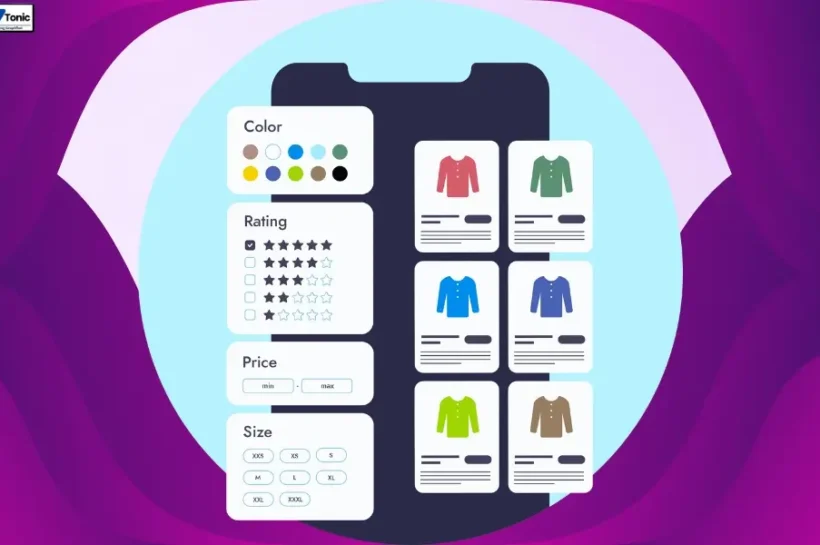




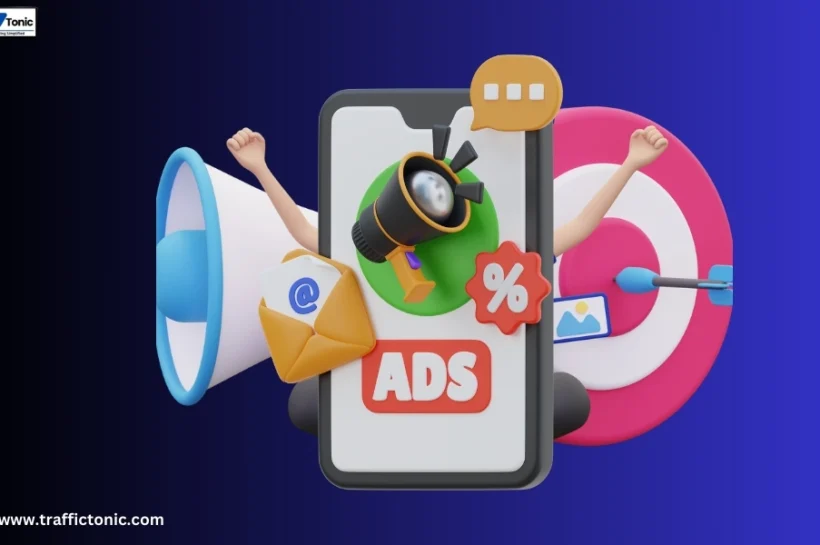
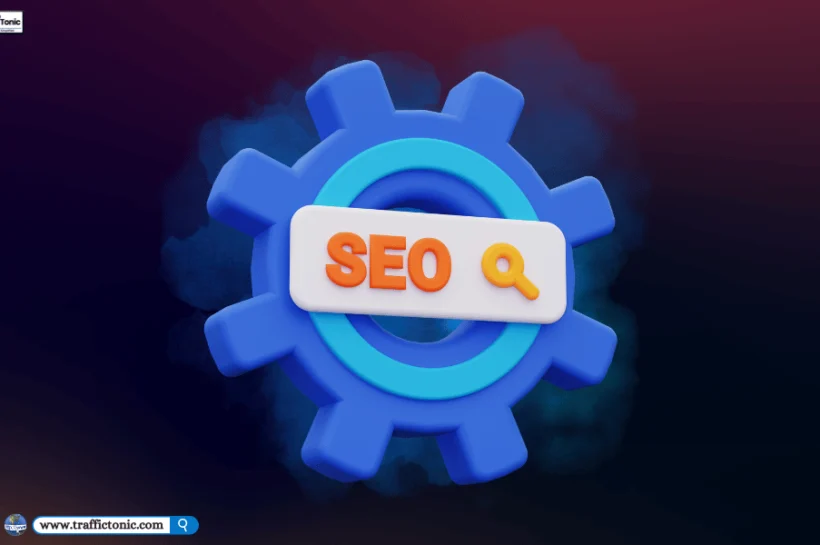




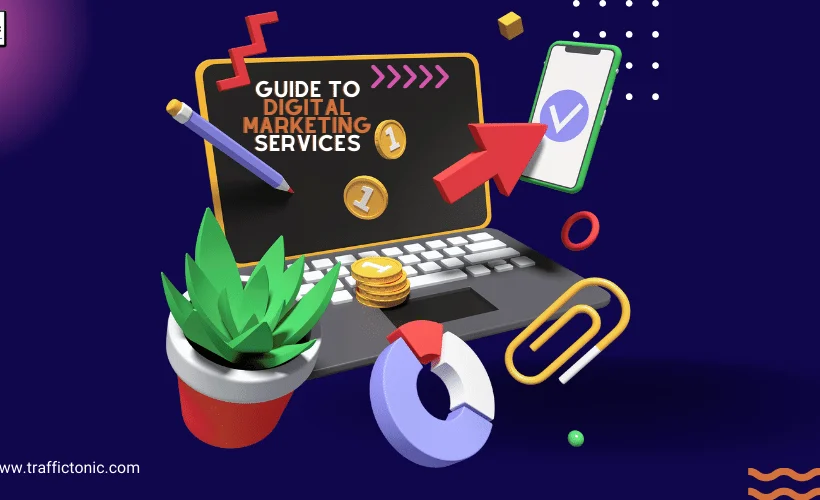
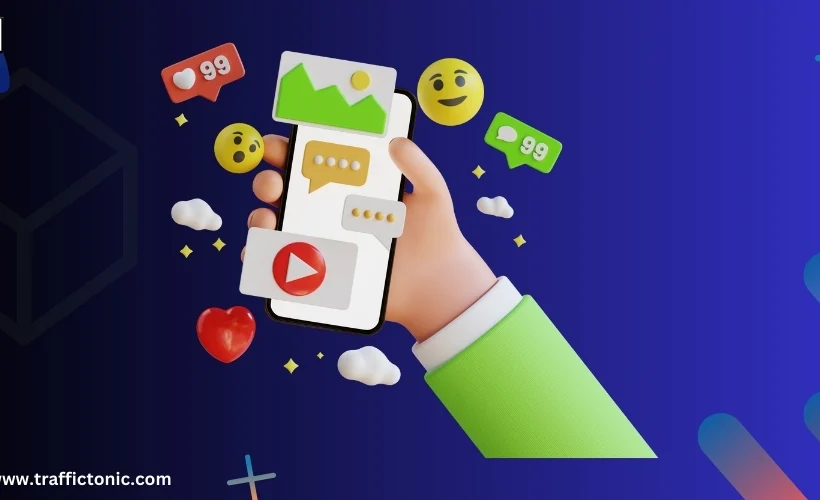

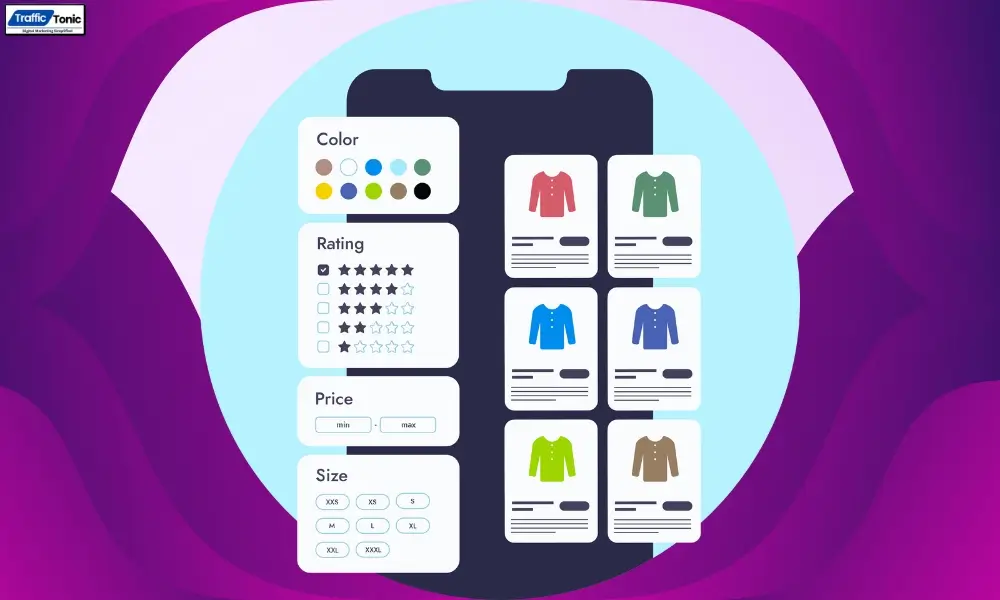



Really appreciate the focus on user experience in your performance marketing strategies.
This guide on performance marketing services is fantastic. Can’t wait to implement it!